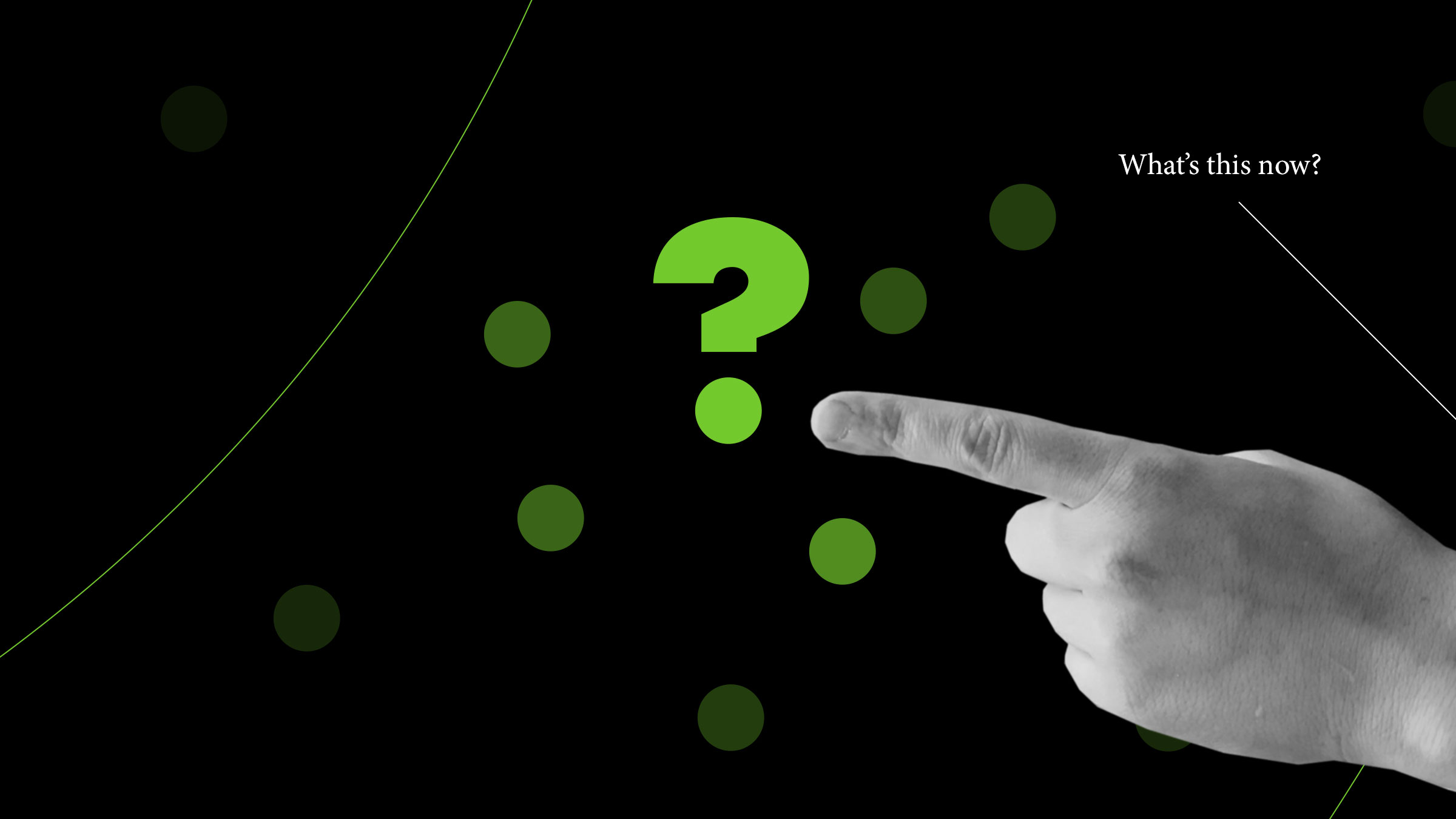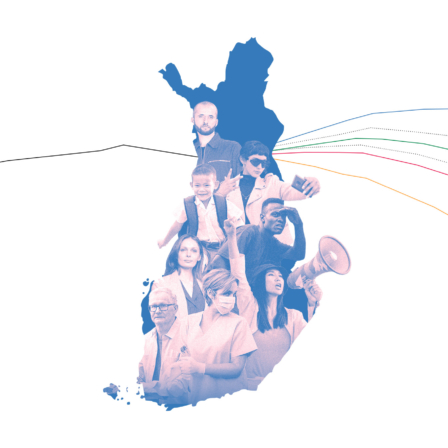There are three ways to approach the future. The first is to identify the development trends that are clearly evident in the present and to consider their consequences. The assumption then is that some type of future can already be seen from the present and that we should currently focus on preparing for the coming changes. Therefore, it is appropriate to refer to this approach as preparing for the future. is an example of this approach.
But what if the conceptual basis is that there is no clear picture of the future yet and that we are to build it together? This allows us to discuss the desired alternate futures and how they should be constructed. This approach can be referred to as the planning futures. is an essential part of planning futures.
The third approach, which often receives less attention, is expanding on the futures. Its goal is to expand on the selection of futures and to challenge the assumptions made about the future. This is beneficial both to planning futures and preparing for them. With more identified futures, one encounters fewer surprising situations and preparing for them becomes easier. From a vast selection of futures, it may also be possible to discover desirable futures that one had not considered before.
Weak signals as expanders of futures
A weak signal is the first indicator of a change or an emerging issue that may become significant in the future. Weak signals are often identified as a part of horizon scanning (environmental scanning) that supplements trend analysis and can be used as a foundation for defining wild cards. In such instances, they are a part of preparing for the future.
Weak signals can also be used to highlight future assumptions, challenge our perceptions of futures and to expand the selection of alternate futures. In Sitra’s Weak Signals work, we emphasise this aspect of weak signals. Although weak signals also supplement Sitra’s megatrend and vision work, the specific aim is to imagine different types of futures, challenge our assumptions about the future and to increase future capacity (the ability to use foresight information and to consider several alternate futures).
Therefore, in addition to the analysis of weak signals that we detected and interpreted in 2018, we have also aimed to make the methods of adopting weak signals available for others’ future work. The methods may include, for example, questions that have been proved to be effective for challenging familiar futures, work templates for collective interpretation or methods for recognising and interpreting weak signals.
What actually is a weak signal?
A weak signal is an existing thing or phenomenon that can be interpreted as an indicator of potential greater change. It is useful to consider a weak signal as having three components:
- The thing or phenomenon itself
- The signal – the news items, photo, service, object, story or event that describes the subject
- The interpretation, which refers to how the signal is received, how it is linked to the interpreter’s own view and world view and how it is used.
Weak signals comprise the following characteristics:
- Novelty: a weak signal is an indicator of something new or a new perspective on a known subject
- Surprising: a weak signal is surprising to its interpreter
- Challenging: a weak signal forces one to challenge existing assumptions and is therefore often difficult to detect or easy to overlook
- Significance: a weak signal describes something that may have an impact on the future
- Delay: a weak signal describes something that is not yet significant but requires time to mature
Similar concepts to weak signals include silent signals, seeds of change and advance warning indicators. Occasionally, wild cards and black swans are also associated with weak signals. However, they are more about a sudden event or phenomenon that may have generated weak signals.
How was the analysis of the weak signals completed?
There were three partly overlapping phases in analysing weak signals: collection, interpretation and packaging. The collection of weak signals began early in 2018. The signals were collected through media monitoring, workshops, blogs and Twitter accounts that cover the future and previously collected signal data. A more detailed listing of the sources is available at the end of this text. The goal was to compile a vast scale of different types of signals. Sitra’s foresight function played a big role in the collection.
The collected signals were classified and saved in a database. The classification was implemented using PESTEC categorisation (political, economic, social, technological, environmental and cultural signals), VERGE categorisation (signals associated with defining, relating, interacting, production and consumption) and free-format subject identifiers. The database is available here.
In addition to the work done by experts, signals were interpreted at three internal Sitra workshops, two foresight workshops, one workshop at a regional foresight seminar and at a National Foresight Network Foresight Monday event. The goal of the interpretation was to dive deeper into what an individual signal or collection of signals would mean from different perspectives. Additional signals were also collected at the workshops. The following different methods were used for interpretation and at the workshops:
- Analysis of the cross-effects of the signals and formulating the results into “What if?” questions
- The Thing from the Future game
- Interpretation of the future using a person of the future
- Future window method
- Analysing signals based on surprise value, novelty and significance, using online software and discussing the results.
The results of the interpretation were packaged according to the PESTEC categories. The goal was to highlight the signal clusters and their potential impacts that were the most thought-provoking and expanded the most on futures. Diversity was also a focus when selecting signals and subjects. However, the selection is not intended to be a comprehensive description of all the potential weak signals.
In addition to the signals, the online articles and Weak Signals report to be published in early 2019 will include the questions, perspectives and methods that proved to be useful during the process. The aim is to help with the collection and interpretation of weak signals.
Database and sources
All collected signals are available for review in this Kumu database. The signals can be organised based on their PESTEC categories, articles and free-format subject identifiers. The signals include the link to the original news story or other written content about the topic.
The signals were collected from the following sources:
Signals collected by others
- What does the customer of the future want?
- Futures Centre Signals of Change
- PPL Tutka
- Shaping Tomorrow
- V&A – “The future starts here” exhibition
- Business Finland Future Watch
- Seeds of good anthropocenes
- Reasons to be cheerful
Magazines and reports
- Suomen sata uutta mahdollisuutta (English: Finland’s one hundred new opportunities)
- Mustat joutsenet: mikä muuttaa maailmaa seuraavaksi? (English: Black Swans: what will change the world next?)
- Futures Literacy Lab for Education
- Scenario magazine
- Ethical OS
- Academic journals, such as Futures and Technological Forecasting and Social Change
News and blogs
- Metlwater news monitoring
- Newsletters, including PSFK, JWT Intelligence, The Future Laboratory
- Blogs, including Future Now, Crap futures, Hinesight, Sceptical futuryst, What’s next, Paleofuture
Social media
- Twitter, see the lists Trends and Futurists, or handles at #tvasignals2018 and #signalofchange
- LinkedIn groups, e.g. Horizon Scanning, Strategic Foresight and Global Foresight
- Facebook groups, e.g. Heikot signaalit (English: Weak Signals) and Ennakointi (English: Foresight)
- Instagram, e.g. futureweaksignals
Events
- Sitra employees that participated in internal events
- Foresight Monday – Weak signals
- Workshop at 2018 regional foresight seminar
- Conferences, e.g. Energizing Futures, FTA 2018: Future in the Making, Nesta FutureFest, Diverse Futures














Recommended
Have some more.